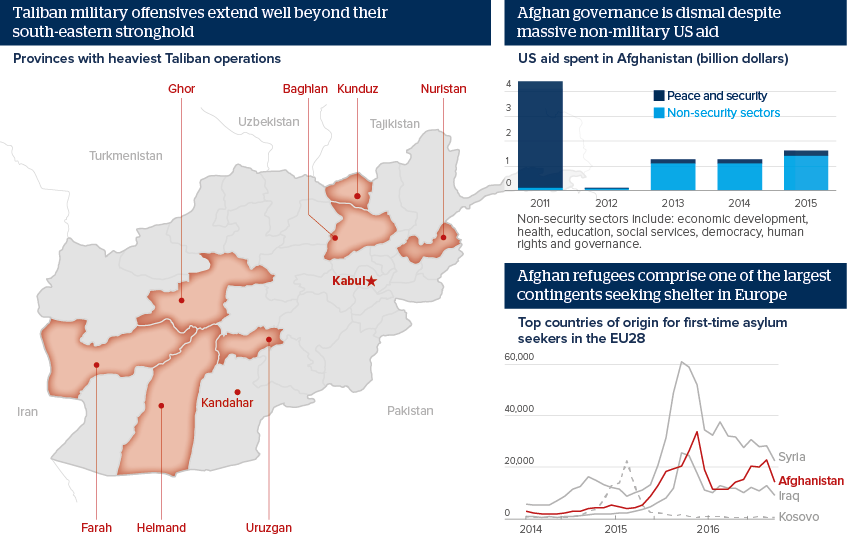Afghan Taliban threat shows no sign of receding
Despite more than 15 years of NATO deployment and US aid, Afghanistan is no closer to peace and stability
Source: Sources: USAid, Eurostat, Oxford Analytica
Outlook
The next US president is likely to maintain the current US policy in Afghanistan, which most notably entails deploying at least 8,400 US troops to provide combat support and training to Afghan security forces in their battle against the Taliban and Islamic State. This policy could be revised after 2017 as neither the counterinsurgency efforts nor massive amounts of foreign aid deliver tangible gains in improving Afghanistan's security and governance.
Emboldened by the US drawdown and united under the new leader Moulavi Haibatullah Akhundzada, the Taliban are likely to control the insurgency battleground against the insufficiently trained and poorly motivated Afghan forces. The Taliban will also continue their assaults against Islamic State-linked combatants, especially in the northern provinces. Further military success would harden the Taliban's opposition to any peace talks held on terms laid out by Washington and Kabul.
Impacts
- The numbers of Afghan refugees, especially of persecuted Hazaras, will rise, straining EU unity over migration.
- Donor fatigue regarding Afghanistan, evidenced at the recent European meeting, will continue to rise in coming years.
- There is limited prospects of a regional compact in Afghanistan, especially given the recent intensification of India-Pakistan tensions.
See also
- Taliban strength is bad news for Afghan forces and IS - Dec 12, 2016
- Afghan Taliban have no incentive to talk peace yet - Oct 19, 2016
- Islamic State poses limited threat to Afghan security - Sep 7, 2016
- More graphic analysis
